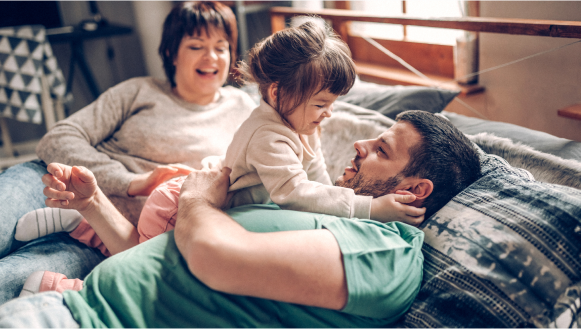
Living with ALS
With ALS, it’s important to be proactive about managing your disease. There are many steps you can take that may help enhance your quality of life, reduce possible symptoms and even prolong survival.
Monitoring function
Frequently monitoring decline in function is important to understanding how ALS is affecting your body. The most widely used test in clinical trials to track ALS is called the ALS Functional Rating Scale-Revised (ALSFRS-R).
The ALSFRS-R is a questionnaire-based scale that you can get from your healthcare provider to track changes in 12 aspects of physical function, including:
Speech
Handwriting
Turning in bed
Dyspnea (difficulty breathing)
Salivation
Cutting food
Walking
Orthopnea (Shortness of breath while lying down)
Swallowing
Climbing stairs
Dressing and hygiene
Breathing insufficiency
Your ALSFRS-R score matters
Each function is scored from 4 (normal) to 0 (no ability). The maximum total score you can get is 48 and the minimum total score is 0. The higher your ALSFRS-R score, the more physical function you retain.
There is a strong connection between your physical function and quality of life. Generally, the better you can move and the longer you can preserve physical function, the more independence you can maintain over everyday activities.
Talk to your healthcare provider(s) about any changes to your ALSFRS-R scores.
Every score is personal
No two people with ALS are alike, meaning every ALSFRS-R score is completely personal and unique. Even if two people with ALS have the same overall score, ALS could still be affecting different regions of their bodies. For instance, take Steven and Mary.*
-

Steven
ALSFRS Score = 40
-
Speech
3
-
Salivation
2
-
Swallowing
3
-
Handwriting
3
-
Cutting food
4
-
Dressing and hygiene
3
-
Turning in bed
4
-
Walking
3
-
Climbing stairs
3
-
Dyspnea (difficulty breathing)
4
-
Orthopnea (shortness of breath while lying down)
4
-
Breathing insufficiency
4
-
-

Mary
ALSFRS Score = 40
-
Speech
4
-
Salivation
4
-
Swallowing
4
-
Handwriting
4
-
Cutting food
4
-
Dressing and hygiene
4
-
Turning in bed
3
-
Walking
3
-
Climbing stairs
2
-
Dyspnea (difficulty breathing)
2
-
Orthopnea (shortness of breath while lying down)
3
-
Breathing insufficiency
3
-
*Steven and Mary are hypothetical people with ALS.
